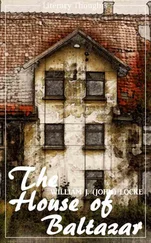John William Polidori - The Diary of Dr. John William Polidori
Здесь есть возможность читать онлайн «John William Polidori - The Diary of Dr. John William Polidori» — ознакомительный отрывок электронной книги совершенно бесплатно, а после прочтения отрывка купить полную версию. В некоторых случаях можно слушать аудио, скачать через торрент в формате fb2 и присутствует краткое содержание. Жанр: Биографии и Мемуары, foreign_antique, foreign_prose, на английском языке. Описание произведения, (предисловие) а так же отзывы посетителей доступны на портале библиотеки ЛибКат.
- Название:The Diary of Dr. John William Polidori
- Автор:
- Жанр:
- Год:неизвестен
- ISBN:нет данных
- Рейтинг книги:5 / 5. Голосов: 1
-
Избранное:Добавить в избранное
- Отзывы:
-
Ваша оценка:
- 100
- 1
- 2
- 3
- 4
- 5
The Diary of Dr. John William Polidori: краткое содержание, описание и аннотация
Предлагаем к чтению аннотацию, описание, краткое содержание или предисловие (зависит от того, что написал сам автор книги «The Diary of Dr. John William Polidori»). Если вы не нашли необходимую информацию о книге — напишите в комментариях, мы постараемся отыскать её.
The Diary of Dr. John William Polidori — читать онлайн ознакомительный отрывок
Ниже представлен текст книги, разбитый по страницам. Система сохранения места последней прочитанной страницы, позволяет с удобством читать онлайн бесплатно книгу «The Diary of Dr. John William Polidori», без необходимости каждый раз заново искать на чём Вы остановились. Поставьте закладку, и сможете в любой момент перейти на страницу, на которой закончили чтение.
Интервал:
Закладка:
Treading again the iron-plated 450 stairs, we came into the street; and, mounting into a fiacre, we went to the Ecole de Dessin, where we found a well-provided gallery of paintings, with two students, unmoved by the visitors around, painting with the patience if not the genius of Dutch masters. They were rather a nuisance on the present occasion, as one covered with his machine a chef d'œuvre of Rubens, the St. Roch amongst the Sick of the Plague . There were two more by the same, of St. Roch and his Dog, etc. They were in a different style of colouring—sombre and grey; none of his gay draperies that I, no connoisseur, thought were constituents of Rubens. I saw—I do not remember whose, but—a picture that struck me much, The Beheading of St. Jean , where all the interest and beauty consisted in a dog smelling the dead body. There were two of Van Eyck, the first (according to the Flemish) who invented painting in oil; where the colouring was splendid and very like the stiffness of glass, but the faces were very good. Kruger had many here in honour of Charles the Vth. Amongst the others, one rather (though probably not meant as such) satirical: Charles, landing, takes hold of Dame Africa, who quietly points to a lion at her feet. Query—to drive him away? There was a Judgment of Solomon by the same, where the child was painted dead with most perfect nature; so much so that my companion, who is a father, could not bear its sight. Teniers has here a Temptation of St. Anthony : strange caricature—what a satire! If mere deceit is the acme of perfection, some Dutchmen may snatch the palm from either Apelles or Parrhasius. They paint boards with an engraving upon them, or a door, 1 1 The word, as written by Charlotte Polidori, seems to be "dole" rather than anything else. It looks as if she had copied the form of Dr. Polidori's word without understanding what it was. I substitute "door," but this is done faute de mieux .
or aught else, so inimitably that it deceived my friend. We went into the Academy of Casts, of Design, etc. There are generally 400 pupils in this town: many fall off annually without great advancement, and are trod on the heels by others.
We thence proceeded to another (we might say) cathedral. The steeple is not yet finished: the model is exhibited, with the curses of the Flemish exhibitors upon the "grande nation" for having taken the funds for its finishing. There are more good pictures than even in the Cathedral: the columns also please me more, being round, with a Gothic approach to Corinthian capital. The most beautiful painting I have yet seen is here (though I probably shall not be held out in my opinion by connoisseurs)—by Pollent, representing the trial of the true Cross upon a sick lady. The harmony of colouring, the soberness (without the commonly accompanying dulness) of the colouring, the good design and grouping, are, in my opinion, beautiful. Not even the splendid colouring of Rubens can make his pictures, in my eyes, equal to it.
[I do not know who is the painter termed Pollent by Polidori: on p. 50 there is the name Polenck, which may designate the same painter. Neither of these names can be traced by me in a catalogue of pictures in the Museum of Antwerp.]
There is one standing by it, of Vandyck, which has some sublimity in it, perhaps arising from indistinctness. It represents the effect of Christ's last sigh. By this altar stood twelve small pictures, hung out at this time for people to tread the "way of Calvary," representing the different stages of our Saviour's sufferings. There were many more pictures, but I cannot remember; seeing so many crowded in the Gallery put others out of my head. But there were painted in the Cathedral of St. Bavon, on the marble in the style of reliefs, different subjects of Scripture in a most masterly style; and so well were the shades managed that we could hardly believe the cicerone when he assured us they were paintings.
In the Gallery of Casts there were the statues of two English ladies of London by an artist who resided thirty years there, and upon his return bestowed these as his finest works. The faces, though not perfect or Grecian, I must say for my countrywomen, pleased me almost as much as any Venus de' Medici.
I have found the people polite, so far as showing the way and then not waiting for a reward—taking off their hats as if you had done them the favour.
April 28. —We set off at 8 this morning to go to Anvers; but, after having proceeded some way, one of the wheels refused to turn, and, after at the next village hammering a long while, I rode off in a passing calèche to Ghent, where I put a maréchal with his assistant into a voiture, and, mounting myself on horseback, returned to the coach. My horse was particularly fond of the shade; and, a house being near one of the barriers, he kindly stopped there to cool me. I, after waiting some time, began to press him to go forward, when he kicked etc. We went, while the carriage was being repaired, into a cottage, where all was extremely neat, and we saw two pictures in it that certainly would not shame the collection of many of our soi-disant cognoscenti. The old man was sick of a fever; and, upon giving him medicine, his kind half sympathetically fell ill of a toothache. Never did I see such chips of the old block as his two daughters. They were very kind. It being Sunday, we saw all the women of the village—all ugly: indeed, I have not seen a pretty woman since I left Ostend.
[This reference to April 28 as being a Sunday puts a stop to any preceding question as to the right day of the month, for in fact April 28, 1816, was a Sunday.]
On proceeding on our journey, we were stopped for our passports, and the fellow began bullying us, thinking we were French; but, when he heard we were English, he became cap in hand, and let us go: indeed, we have not yet shown our passports.
Having eaten, I issued forth in search of the Promenade, and found the canal with walks called La Copeure. Many ladies, all ugly without exception—the only pretty woman being fat and sixty. It very much resembled the Green Basin, where our West-end cits trot on one another's heels with all possible care: not quite so crowded. Coming back, I tourized to the Roi d'Espagne, where, as in a coffeehouse, I found a room full of disreputable women and card-tables. This, instead of the streets, is the lounge for such women. I went to the Café Grand, where by means of mirrors some excellent effects are produced. There also were billiards, cards, dice, etc. A cup of coffee, some centimes; a glass of lemonade, two sous: a woman presides at the end of the room.
"Lord Byron" was in the Ghent Gazette . Lord Byron encouraged me to write Cajetan , and to continue being a tragedian. Murray offered £150 for two plays, and £500 for my tour.
April 29. —Looking from my window, I saw a native dashing about in a barouche and four. There is in the town a society of nobles, and another of literati. Mr. Scamp has a fine collection of pictures, which I did not see. In Ghent, as well as in all other places where I have been, the barber's sign is Mambrino's helm. On the Sunday mornings there is a market for flowers in pot in the Place des Armes.
We set off at 11 in the morning, and passed through some fine villages: one of which, St. Nicholas, the mistress of the inn told me Buonaparte made into a town—"mais il n'y a pas des postes." The country is tiresomely beautiful. Fine avenues, which make us yawn with admiration; not a single variation; no rising ground—yes, one spot raised for a windmill. The landscape is as unchangeable as the Flemish face. The houses white-washed, with a row of trees before them; the roofs tiled, and the windows large. Indeed, the appearance of comfort in the places we have passed through is much greater than any I have seen in England. We have only seen one country-villa, and that very English: its pasture had the only firs we have yet seen. The avenues are sometimes terminated by a church or a house—the church very ugly; and both very tiresome, as they always prove much farther off than is at first expected. The ground cultivated, and without a weed—no waste ground. The plough moves as if cutting water, the soil is so light a sand. Women work in the fields as well as men. No more difference is found in the face of the inhabitants than in the face of the country. Nothing striking, all evenness, no genius, much stupidity. They seemed to spend all their fund of cleanliness upon their fields and houses, for they carry none about them.
Читать дальшеИнтервал:
Закладка:
Похожие книги на «The Diary of Dr. John William Polidori»
Представляем Вашему вниманию похожие книги на «The Diary of Dr. John William Polidori» списком для выбора. Мы отобрали схожую по названию и смыслу литературу в надежде предоставить читателям больше вариантов отыскать новые, интересные, ещё непрочитанные произведения.
Обсуждение, отзывы о книге «The Diary of Dr. John William Polidori» и просто собственные мнения читателей. Оставьте ваши комментарии, напишите, что Вы думаете о произведении, его смысле или главных героях. Укажите что конкретно понравилось, а что нет, и почему Вы так считаете.












